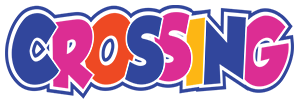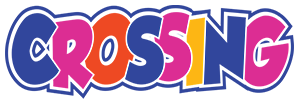Mythological archetypes are recurring symbols and character types rooted in ancient stories, which continue to shape modern narratives across various media. These archetypes serve as cognitive tools that help audiences understand complex themes, moral dilemmas, and human nature through familiar patterns. Among the most enduring archetypes are the Trickster and the Hero, each with deep cultural roots and significant influence on contemporary storytelling.
2. Theoretical Foundations
3. The Trickster
4. The Hero
5. Comparison
6. Trickster Examples
7. Hero Examples
8. Modern Archetypes & Le Zeus
9. Cultural Impact
10. Deeper Layers
11. Conclusion
1. Introduction to Mythological Archetypes in Modern Entertainment
Archetypes are universal symbols and character types that recur across cultures and eras, forming the foundation of storytelling. Their significance lies in their ability to resonate deeply with audiences by tapping into shared human experiences. In contemporary entertainment—ranging from films and television to video games—these archetypes help creators craft compelling narratives that are both familiar and meaningful.
Two of the most prominent archetypes are the Trickster and the Hero. The Trickster often embodies cunning and chaos, challenging norms and sparking transformation, while the Hero typically symbolizes bravery and moral integrity, overcoming adversity to achieve a greater good. These archetypes have rooted origins in ancient mythologies—such as Norse, Greek, and Indigenous stories—and continue to evolve within modern contexts, including digital media and interactive entertainment.
Understanding how these archetypes function today allows us to see their influence not only in entertainment but also in societal values and cultural narratives.
2. Theoretical Foundations of Mythological Archetypes
a. Carl Jung’s Concept of Archetypes and Collective Unconscious
Swiss psychiatrist Carl Jung proposed that archetypes are innate, universal symbols residing in the collective unconscious, shared across all human cultures. These symbols manifest through myths, dreams, and storytelling, serving as mental templates that guide human perception and behavior. For example, the Hero often embodies qualities of courage and sacrifice, while the Trickster represents wit and subversion.
b. Joseph Campbell’s Hero’s Journey and Its Relevance Today
Mythologist Joseph Campbell outlined the Hero’s Journey—a narrative pattern involving stages like call to adventure, trials, and eventual transformation—that underpins many stories worldwide. This framework remains relevant, guiding modern creators in constructing compelling hero narratives, from Luke Skywalker in Star Wars to Harry Potter. Recognizing this pattern helps audiences connect with characters’ growth and moral challenges.
c. The Trickster Archetype: Characteristics, Functions, and Cultural Variations
The Trickster appears in diverse cultures—from the Norse Loki to the African Anansi—serving functions such as social critique, chaos induction, and facilitating change. Traits include cleverness, unpredictability, and a penchant for breaking norms. Modern reinterpretations often depict Tricksters as humorous, rebellious figures who challenge authority and conventional wisdom, reflecting societal tensions and aspirations.
3. The Trickster Archetype: Characteristics and Functions
a. Core Traits: Cleverness, Unpredictability, Subversion of Norms
Tricksters are characterized by their wit and ability to adapt quickly. They often defy authority and social rules, using humor and cunning to outsmart others. This subversion can serve to highlight societal flaws or catalyze transformation, making Tricksters vital agents of change in myth and media.
b. Role in Mythologies: Chaos, Transformation, and Social Critique
In traditional myths, Tricksters often embody chaos, disrupting order to pave the way for renewal. For instance, Norse Loki causes mischief that leads to both destruction and eventual reconstruction of the world. Similarly, Tricksters critique societal norms, questioning authority and moral conventions, which allows cultures to explore complex themes through satire and parody.
c. Modern Reinterpretations: From Traditional Myths to Entertainment Media
Today, Trickster figures appear in movies, comics, and video games. Characters like Deadpool exemplify this archetype—combining humor, defiance, and unpredictability—challenging traditional hero stereotypes. Visual motifs, such as playful symbols or mischievous expressions, reinforce their archetypal role, often subverting expectations and engaging audiences with their irreverent charm.
4. The Hero Archetype: Characteristics and Functions
a. Core Traits: Bravery, Moral Integrity, Overcoming Adversity
The Hero embodies qualities such as courage, self-sacrifice, and moral clarity. They often face formidable challenges, symbolizing the human capacity for resilience and virtue. Classic examples include Hercules, King Arthur, and modern figures like Katniss Everdeen, each illustrating the archetype’s emphasis on overcoming adversity for a greater good.
b. Evolution in Modern Storytelling: Complexity and Moral Ambiguity
Contemporary heroes often display moral ambiguity, reflecting real-world complexities. Characters like Walter White from Breaking Bad or Marvel’s Wanda Maximoff blur traditional lines between good and evil, emphasizing internal conflicts and personal growth over simplistic morality.
c. The Hero’s Journey in Contemporary Narratives
Modern adaptations continue to employ Campbell’s Hero’s Journey, evident in films like The Lord of the Rings or in video game protagonists. These stories resonate because they mirror the universal pattern of challenge, transformation, and return, highlighting the enduring relevance of the archetype.
5. Interplay and Contrast: Trickster vs. Hero in Myth and Media
While Tricksters and Heroes often serve different narrative functions, they also share overlaps. Some characters embody both archetypes, oscillating between chaos and virtue. For example, in Marvel comics, Loki is a Trickster with moments of heroism, illustrating the fluidity of archetypal boundaries. These characters challenge simplistic classifications and enrich storytelling by blending traits.
Common traits include:
- Cleverness: Both archetypes rely on intelligence—be it cunning or moral insight.
- Transformation: Both can catalyze change—heroes through growth, tricksters through disruption.
- Social roles: They question or uphold societal norms, often reflecting cultural tensions.
6. Case Study: Modern Entertainment Examples of the Trickster
a. Analysis of Characters such as Loki, Deadpool, and Others
Loki from Norse mythology and Marvel comics epitomizes the Trickster—clever, unpredictable, and often morally ambiguous. His visual motifs include mischievous expressions and symbolic artifacts like the scepter, emphasizing his role as chaos agent. Similarly, Deadpool challenges conventional heroism with irreverent humor, breaking the fourth wall and subverting expectations, which reinforces his archetypal identity as a modern Trickster.
b. The Role of Cultural Symbols and Visual Motifs
Symbols like the Wild icon in slot games such as lezeus co uk official website often incorporate mythological motifs. For instance, the Wild symbol’s golden ‘W’ can evoke divine or mythic themes, linking gameplay to archetypal stories of chaos and transformation. These motifs subtly reinforce the archetypal traits of cleverness and unpredictability.
c. How These Characters Challenge Traditional Narratives
Modern Trickster figures destabilize straightforward hero narratives, encouraging audiences to question authority and societal norms. Their unpredictability and humor serve to critique or satirize traditional values, making stories more nuanced and reflective of contemporary social dynamics.
7. Case Study: Modern Entertainment Examples of the Hero
a. Analysis of Characters such as Harry Potter, Wonder Woman, and Others
Harry Potter exemplifies the heroic journey—initially an orphan, he faces adversity and moral challenges, ultimately triumphing through bravery and sacrifice. Wonder Woman embodies divine heroism rooted in Greek mythology, emphasizing moral integrity and resilience. Both characters’ development is heavily influenced by mythological narratives, making their stories resonate universally.
b. The Influence of Mythological Hero Stories
These characters’ journeys mirror classical myths, such as Hercules’ labors or Odysseus’ odyssey, reinforcing the archetypal theme of overcoming trials to attain enlightenment or societal acceptance. Modern media adaptations often expand these stories, incorporating contemporary issues and moral complexities.
c. The Hero’s Journey in Contemporary Settings
From video games to blockbuster films, the hero’s journey remains a powerful storytelling template. Examples include The Witcher series or Marvel’s Avengers, where protagonists evolve through challenges, embodying the enduring appeal of the archetype.
8. Le Zeus as a Modern Illustration of Mythological Archetypes
a. Overview of the Game and Its Thematic Elements
Le Zeus is an example of how contemporary entertainment can incorporate mythological motifs into engaging formats like online slot games. It uses thematic symbols and visual cues to evoke Greek mythology, blending playful graphics with archetypal themes of divine power and chaos.
b. The Use of Symbols to Evoke Mythological Motifs
In Le Zeus, the Wild symbol features a golden ‘W’, reminiscent of divine insignia, subtly referencing mythic themes of power and transformation. Such symbols serve as visual shorthand, connecting players to archetypal stories of gods and heroes, even in a playful gaming context.
c. Blending Playful, Non-Traditional Representations with Archetypal Themes
Le Zeus demonstrates how modern media reinterprets traditional archetypes with humor and innovation, making mythological themes accessible and engaging for diverse audiences. This approach exemplifies the timeless relevance of archetypes, adapting them for new cultural expressions.
9. The Cultural Significance and Impact of Archetypes in Modern Media
Archetypes shape how audiences perceive characters and narratives, fostering emotional connections and cultural understanding. Visual symbols and game design elements reinforce these themes, making stories memorable and meaningful. For instance, the recurring motif of the Wild symbol not only enhances gameplay but also embeds mythological symbolism into popular culture.
These archetypes influence societal narratives by reflecting and shaping values, fears, and aspirations—whether through the moral clarity of heroes or the disruptive wit of Tricksters.
10. Beyond the Surface: Deeper Layers of Mythological Archetypes in Entertainment
At a deeper level, archetypes serve as tools for exploring human psychology and societal values. Modern media often subverts or redefines these symbols—portraying heroes with flaws or Tricksters with depth—to reflect contemporary complexities. Diversity in representation also enriches archetypal narratives, ensuring they resonate with a broader audience and foster inclusivity.






